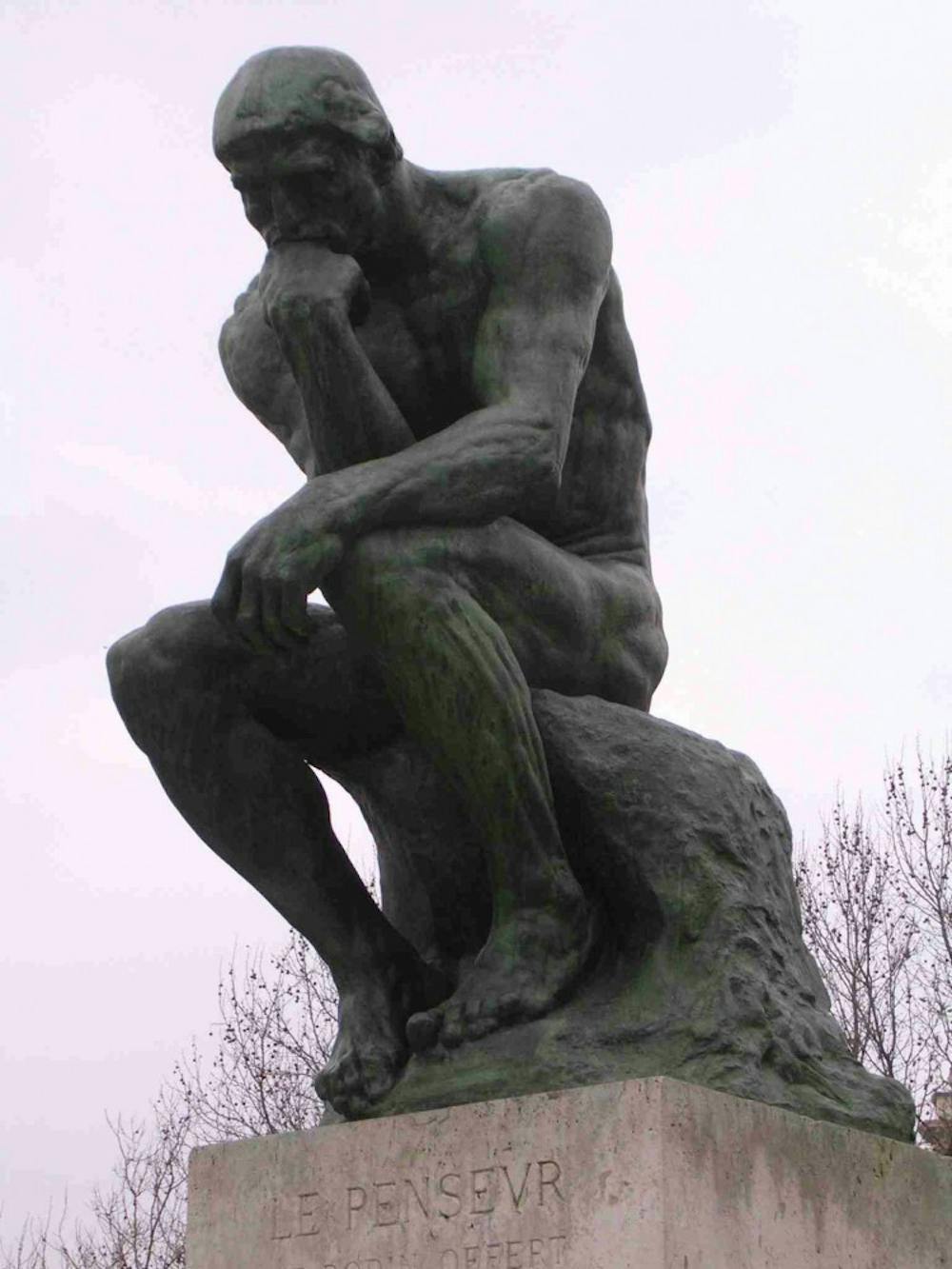The human presence is this single Rodin-lined room of the Arthur Ross Gallery’s most startling feature. Bronze casts—of heads, hands, bodies contorted in activities mundane and extraordinary—narrate the breadth and depth of human experience. Three sculptures represent such diversity, respectively addressing thought, sex, duty. Venus, Ovid’s Metamorphosis and Jean D’Aire are a microcosm of the works in this collection: a sample of a sample.
Venus (circa 1888) explores the constraints of human physicality, illustrated by a four-foot feminine form, arms extended sinuously upward, elegantly tripping. With this disruption of the body’s symmetry, Rodin creates tension between the transience of the pose and the eternity of its sculptural medium: an infinite moment. The physical limitation of the human body is offset by a suggestion of contemplation in the woman’s expression. Impressionistic eyes—two shallows imprints of the artist’s thumbs in soft wax—exclude the viewer from the private experience of Rodin’s Venus. This introspection of a falling figure speaks of the limitations of body, and of the transcendence of mind.
Contrasting the airiness and solitude of Venus, Ovid’s Metamorphosis (1885-89) gets right to it with a portrayal of two women getting down. One lies prone beneath the advances of the other, supported or restrained by the arms and thighs of her assailant and partner. The intertwining limbs of the two figures and material melding of lips with cheek in their embrace suggest the ambiguity of individuality in sexual union. Yet the defensive posture of the cradled figure hints at sexual violence. Metamorphosis is a spatially dynamic piece, its form and connotation altering with one’s perspective. The complexity of the forms captivates and seduces, inviting us to circle its plinth; it incites voyeurism in the viewer such that in observing we become intimately involved with the observed.
While Ovid’s Metamorphosis had the ignoble intention of causing French society to choke on its baguette, Rodin completed Jean D’Aire in a fonder moment of national reflection. It is the study for a work commemorating Calais’ burghers: local men who sacrificed themselves to end King Edward III’s siege. Standing five feet tall, this middle-aged man defiantly considers both his duty and mortality. The bronze is dark and vibrant, like crude oil in sunlight; there is harmony between the density of the medium and the matter. The sculpture’s rough texture draws attention to Jean D’Aire’s Action Manliness: the veins and muscle of his arms stand out like rope; his thighs resemble angry walnuts; the broad slab of his shoulders is imposing. But the line insinuating greatest strength is that of his mouth: a rigid crevice definitively downturned. These are the lips of resolution, of national responsibility, of strength in adversity.
This threesome speaks respectively of our cerebral, sexual and conscientious natures. But they speak loudest to our physicality, to the clumsy, elegant, imperfect human presence. Herein lies Rodin’s genius: his lifework is the paradox of animation in that which is motionless and of life in sculpted bronze.

